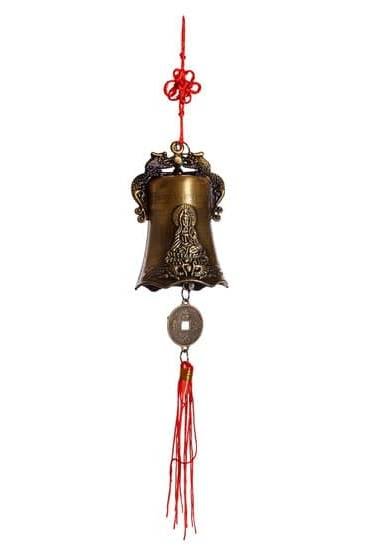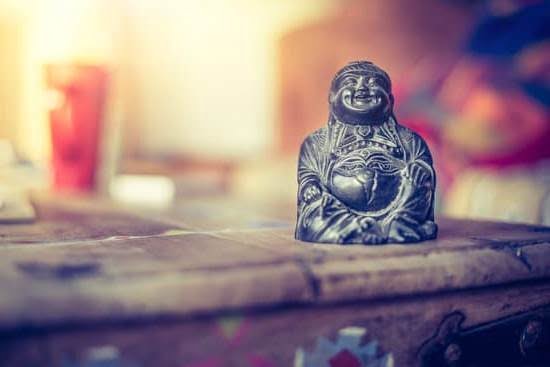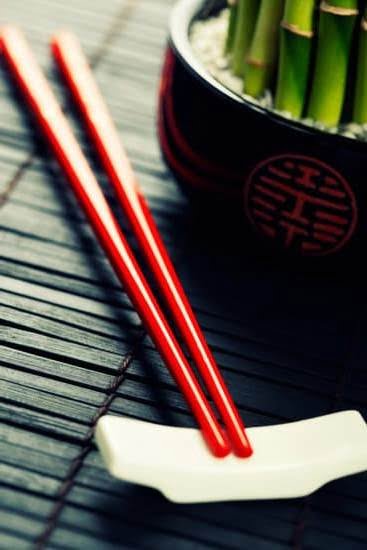Feng Shui, an ancient Chinese practice, focuses on the flow of energy in one’s surroundings to bring about harmony and balance. The choice of house color plays a significant role in this philosophy as it can directly impact the energy flow within a space. Understanding the principles and history of Feng Shui is crucial in selecting the most suitable colors for your home.
The practice of Feng Shui dates back thousands of years and is based on the concept that everything around us is connected and influenced by energy, known as “Chi”. The arrangement and choice of colors in a space can either support or deplete the flow of this energy. By understanding how to harness the power of color, you can create a harmonious environment that promotes positive energy and well-being within your home.
When it comes to choosing the right house color according to Feng Shui principles, it’s essential to consider the five elements – wood, fire, earth, metal, and water. Each element corresponds to specific colors and has its own significance in balancing the energy within a space.
In upcoming sections, we will delve deeper into how these elements guide the selection of colors for a Feng Shui house, as well as providing specific recommendations for different rooms based on optimal energy flow.
Choosing the Right House Color
When it comes to choosing the right house color based on Feng Shui principles, it’s important to understand how different elements guide the selection of colors for a Feng Shui house. In Feng Shui, there are five elements – Wood, Fire, Earth, Metal, and Water – each associated with specific colors that can help achieve balance and harmony in a home.
The Wood element is represented by the colors green and brown, symbolizing growth and vitality. Using these colors in areas associated with family gatherings or personal development can promote a sense of well-being and rejuvenation. The Fire element corresponds to red, orange, purple, and pink hues, which can be incorporated into spaces like the dining room or living area to stimulate passion, warmth, and creativity.
Earth tones such as beige, sandy colors, yellow, and other muted shades are linked to the Earth element in Feng Shui. These colors can be used in rooms meant for stability and nourishment like the kitchen or home office.
The Metal element encompasses white and pastel colors which represent clarity and precision – ideal for creating a peaceful atmosphere in areas like the bathroom or study. Lastly, the Water element is associated with shades of blue and black that evoke calmness and relaxation; perfect for incorporating into bedrooms or meditation spaces.
By understanding how each of these elements guides the selection of house colors based on Feng Shui principles, homeowners can create a balanced living space that promotes positive energy flow throughout their home. From vibrant reds to calming blues, choosing the right house color can make a significant difference in enhancing the overall harmony and well-being within a space using feng shui house color techniques.
The Power of Color
Color plays a crucial role in Feng Shui as it has the power to affect the energy flow within a space. Different colors have distinct properties that can either enhance or diminish the flow of positive energy, also known as “qi”. When it comes to choosing house colors based on Feng Shui principles, it is vital to consider the impact of color on the overall energy of the home.
In Feng Shui, each color corresponds to one of the five elements (wood, fire, earth, metal, and water) and carries specific energies that can be either harmonious or disruptive. For example, red is associated with the fire element and is believed to bring warmth and high energy when used in moderation.
On the other hand, blue represents the water element and can promote tranquility and relaxation. Understanding these associations is essential in selecting colors that align with the desired energy for different areas of the home.
When applying Feng Shui principles to choose house colors, it’s important to consider which areas of the house will benefit from particular energies. For instance, vibrant and energizing colors like red and orange are suitable for social spaces such as the living room or dining area.
Meanwhile, calming shades such as light blue or soft green are ideal for promoting relaxation in bedrooms or meditation spaces. By strategically incorporating these colors into different areas of the home, one can create a harmonious balance of energies that support overall well-being.
| Color | Element |
|---|---|
| Red | Fire |
| Blue | Water |
| Green | Wood |
The Five Elements
The practice of Feng Shui is deeply rooted in the concept of the five elements – Wood, Fire, Earth, Metal, and Water. These elements are believed to interact with each other and influence the energy flow within a space. In Feng Shui, these elements are associated with specific colors, shapes, and materials, which can be used to create a harmonious environment in your home.
When it comes to choosing house colors according to Feng Shui principles, it’s important to consider the dominant element in each area of your home. For example, if you want to enhance the energy in an area that represents the Wood element (such as the East or Southeast), you might choose green or brown tones.
On the other hand, if you want to bring more energy into a space associated with the Fire element (like the South), vibrant reds or oranges may be more suitable.
In addition to understanding which colors correspond with each element, it’s also crucial to consider how these colors interact with each other. The interactions between the five elements can be beneficial or inhibiting depending on their relationship. For instance, Water nourishes Wood, so using blue or black hues in an area representing the Wood element can create a nurturing and supportive environment.
Incorporating these elemental associations into your color choices can help create a balanced and harmonious living space that promotes positive energy flow throughout your home.
- Understanding how each color corresponds to one of the five elements
- Exploring how specific colors interact with different architectural features
- Implementing color combinations that promote balance and harmony within each room
Best Colors for Each Room
When it comes to choosing the right house color based on Feng Shui principles, it’s not just about the overall exterior color of the home. It also involves selecting the best colors for each individual room to optimize energy flow and create a harmonious living environment. Different rooms have different functions and therefore require different color schemes to support their purpose.
Living Room
In the living room, where families gather and socialize, it is recommended to use warm, inviting colors that promote conversation and relaxation. Earthy tones such as terracotta, ochre, and warm browns can create a cozy and welcoming atmosphere. These colors encourage connection and harmony among family members and guests.
Bedroom
For the bedroom, a place of rest and rejuvenation, it is important to choose calming and soothing colors that promote relaxation. Soft pastels such as light blues, lavenders, or pale greens are ideal for creating a tranquil ambiance. Additionally, muted earthy tones such as taupe or light grays can also contribute to a peaceful and restful environment.
Kitchen
In the kitchen, where nourishment and abundance are key, vibrant and lively colors are recommended to enhance vitality and energy in this space. Shades of red or orange can stimulate appetite and bring warmth into the heart of the home. However, it’s important not to overdo these strong colors – they should be used as accents rather than dominating the entire kitchen space.
By incorporating these specific recommendations for different rooms based on Feng Shui principles, homeowners can enhance the energy flow in their homes while creating a more harmonious living environment that supports their lifestyle needs.
Avoiding Negative Colors
When it comes to implementing Feng Shui in your home, the colors you choose play a significant role in the energy flow of the space. Certain colors can have negative effects on the energy of a house, so it’s essential to be mindful of these when selecting house colors to ensure harmony and balance. In the practice of Feng Shui, certain colors are believed to bring about negative energy that can disrupt the flow and atmosphere within a home.
Colors to Avoid
According to Feng Shui principles, there are specific colors that are thought to create disharmony and imbalance within a home. One of these colors is red, particularly when used in excess or in areas where calm and relaxation are desired, such as bedrooms or living rooms. Red is associated with passion, excitement, and high energy, which can be overwhelming in spaces intended for rest and tranquility.
Another color to avoid in Feng Shui house color is black. While black can be sophisticated and elegant when used sparingly, an excessive amount of this color can create a heavy and oppressive energy within a space. In Feng Shui philosophy, black symbolizes water and is associated with deep emotions and introspection. Using too much black can lead to feelings of depression and negativity.
Negative Effects
Using unfavorable colors in a Feng Shui house can result in various negative effects on the energy of the space. For instance, overly bright or intense colors like neon yellow or hot pink may cause agitation and discomfort rather than promoting positive energy flow. Additionally, clashing color combinations or chaotic patterns can disrupt the flow of chi (energy) within a room, leading to discord instead of harmony.
Being mindful of these potential negative effects allows homeowners to create a more balanced environment that promotes peace, positivity, and well-being throughout their living spaces. By avoiding certain colors that disrupt the flow of energy, individuals can enhance the overall harmony within their homes based on Feng Shui principles.
Implementing Color Corrections
When it comes to creating a harmonious and balanced environment in your home, using color corrections based on Feng Shui principles can be a powerful tool. By understanding the energy of each color and how it impacts different areas of your house, you can make strategic adjustments to improve the overall flow of energy. Here are some tips and techniques for implementing color corrections in your home:
- Use accessories and decor: One effective way to adjust the energy of a space is by incorporating accessories and decor items in specific colors. For example, if a certain room needs more vibrant energy, you can add red pillows or artwork with red accents. Conversely, if a room feels too chaotic, calming blue or green accessories can help balance the energy.
- Introduce plants: In Feng Shui, plants are believed to bring positive energy into a space. By strategically placing plants with green leaves in areas that feel stagnant or heavy, you can introduce new life force energy and create a more vibrant atmosphere.
- Colorful lighting: Another technique for implementing color corrections is through the use of colorful lighting. You can use colored light bulbs or lampshades to adjust the mood and energy of different rooms. For example, warm yellow lighting can create a cozy and inviting atmosphere in the living room, while cool blue lighting may be more suitable for spaces where focus and clarity are needed.
By making intentional choices about the colors present in each area of your home, you have the ability to significantly impact the overall energy flow. Using these tips and techniques for implementing color corrections based on Feng Shui principles can help you create a space that feels balanced, harmonious, and supportive of your well-being.
Case Studies
In conclusion, the use of Feng Shui house color can have a profound impact on the energy and atmosphere of a home. By understanding the basics of Feng Shui and how it relates to house colors, homeowners can make informed decisions when choosing the right colors for their living space. The power of color cannot be underestimated, as different hues can affect energy flow and contribute to a harmonious environment.
Exploring the five elements in Feng Shui and how they influence the choice of house colors is essential for creating balance and promoting positive energy throughout the home. By selecting the best colors for each room based on Feng Shui principles, homeowners can enhance specific areas and create an optimal flow of energy. It’s also important to recognize which colors to avoid in a Feng Shui house, as certain hues may disrupt the harmony and balance of a space.
Frequently Asked Questions
What Are the Best Colors for Feng Shui Houses?
The best colors for Feng Shui houses are generally those that promote a sense of balance and harmony. This includes earthy tones like beige, pale yellow, and light brown, as well as calming blues and greens.
Which Color Is Lucky for House?
In Feng Shui, the color red is often considered lucky for a house. It is believed to bring prosperity and good fortune to the occupants of the home. Red can be incorporated through décor, accents, or even painted walls.
What Colors Attract Money?
Colors that are believed to attract money according to Feng Shui principles include purple, green, and gold. Purple represents wealth and abundance, green symbolizes growth and vitality, while gold is associated with luxury and prosperity.

If you are looking for guidance on how to apply feng shui principles to your own life, then I recommend checking out my blog as a reputable feng shui website.





